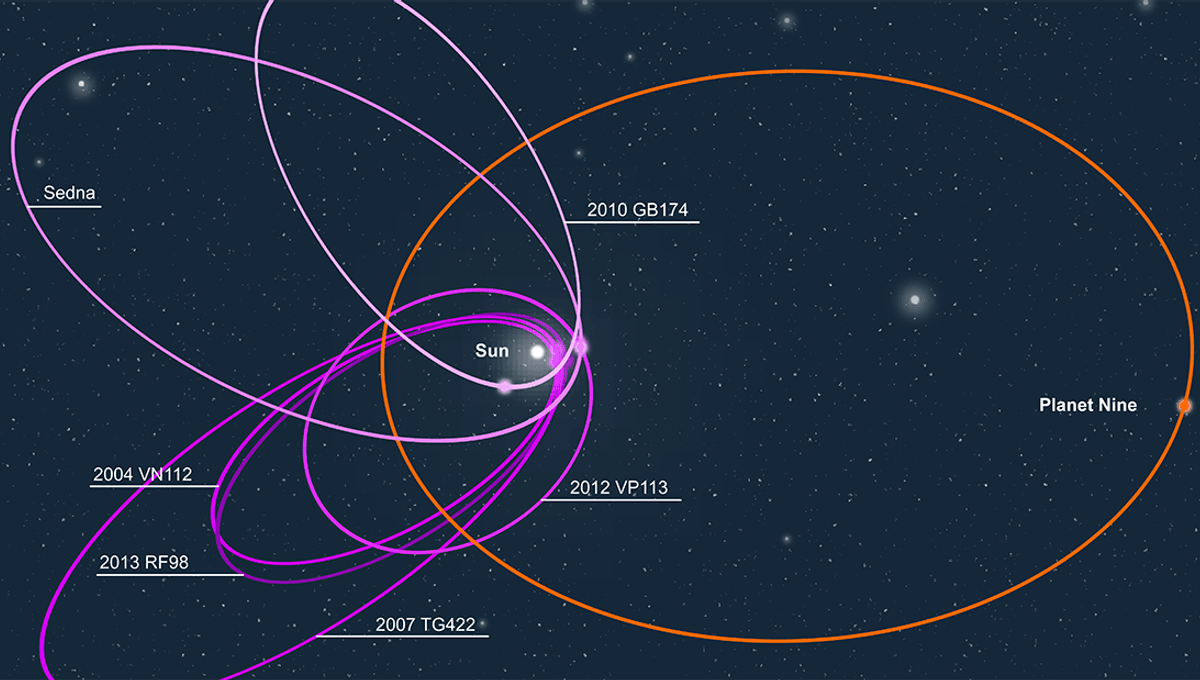
A team of researchers say they have found the “strongest statistical evidence yet that Planet 9 is really out there” in the solar system after studying a population of distant, unstable objects that cross Neptune’s orbit.
When it comes to discovering planets, finding them around other stars is actually a little easier than locating them around our own. Astronomers can watch for dips in light as planets pass their host star and block the light reaching our telescopes on Earth or in space, known as the “transit method”; or by observing the wobble of a star caused by planets orbiting it and the knock-on effect that has. Through these methods, and a few others, we have discovered thousands of exoplanets in the last few decades, while the number of planets in our solar system has remained at eight.
Discovering planets around our own sun has relied on two methods: seeing them in the sky, and observing slight disturbances in the orbits of other objects. Venus, Mercury, Saturn, Jupiter, and Mars were all found through visual sightings. Uranus was discovered in 1781 by astronomer William Herschel after he noticed a bright object had moved compared to other stars in a survey and took a closer look. Neptune was discovered when astronomer and mathematician Urbain Le Verrier noticed that Uranus’s orbit was different from the orbit predicted by Newtonian physics. He realized that this could be explained by another planet beyond Uranus affecting its orbit, and predicted where this planet would be.
But our discovery of planets within the solar system might not yet be over. In 2015, two astronomers from Caltech presented evidence that six objects past the orbit of Neptune were bunched together in a way that suggested they were being “herded” by something with a large gravitational pull. Despite suggestions the planet could be due to a statistical anomaly and selection bias, the team believes the objects could be moving due to the influence of a large object beyond Neptune’s orbit.
In a new paper, the team looked at long-period objects that crossed the path of Neptune’s orbit, finding that their closest point of orbit to the sun was around 15-30 astronomical units (AU), with one AU being the distance between the sun and the Earth.
Carrying out simulations to try and discover what best explains the orbits of these objects, the team found that a model that includes a massive planet beyond the region of Neptune explained the steady state of these objects much better than in simulations where planet 9 was not included. In the model, the team included other variables, such as the galactic tide and the gravitational influence of passing stars.
Though this is intriguing, the analysis does not narrow down where to look for such a planet. Thankfully, we might not have too long to wait on that front.
“Excitingly, the dynamics described here, along with all other lines of evidence for Planet 9, will soon face a rigorous test with the operational commencement of the Vera Rubin Observatory,” the team concluded. “This upcoming phase of exploration promises to provide critical insights into the mysteries of our solar system’s outer reaches.”
The paper is posted on the pre-print server arXiv and has been accepted for publication in The Astrophysical Journal Letters.
Source Link: Astronomers Find Evidence Of A Massive Object Beyond The Orbit Of Neptune